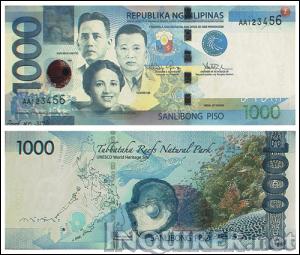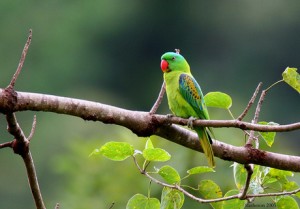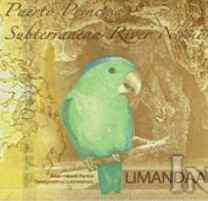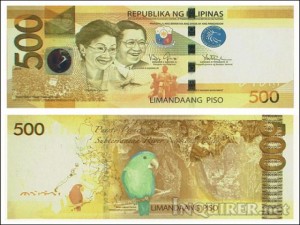Philippines Creates Fake New Parrot Species
Posted by: Loren Coleman on December 20th, 2010

The Philippines government is in crisis, and in part, it is because they created a bird that doesn’t exist, not even as a cryptid. On Monday, December 20, 2010, the government of the tropical Pacific country defended its new peso notes, mocked by critics for featuring error-strewn maps of the country and apparently inventing a new species of parrot.
The central bank started shipping the bills to banks last Friday (December 17th), reportedly with them being publicly available by Christmas, deputy governor Diwa Gunigundo told the media.

He defended the artistic rendition of Philippine maps appearing on the 20-, 50-, 100-, 200-, 500-, and 1,000-peso notes (45 US cents = 22.59 peso dollars), which excluded the Batanes islands near Taiwan and misplaced some of the country’s top tourist draws.
Most importantly, cryptozoologically and zoologically, Gunigundo furthermore defended the image of a rare native bird, the blue-naped parrot, on the 500-peso bill, saying it was patterned after the yellow color scheme of the denomination.

The real parrot.

The fake parrot.
The Blue-naped Parrot (Tanygnathus lucionensis), also known as the Blue-crowned Green Parrot, Luzon Parrot, the Philippine Green Parrot, and locally known as Pikoy, is a parrot found throughout the Philippines including the Talaud Islands and islands off north and east Borneo (with introduced population in Borneo itself, e.g. Kota Kinabalu).
The only trouble is, said the Wild Bird Club of the Philippines, a birdwatchers’ organization, the yellow-beaked parrot on the note does not exist anywhere in the country, since in real life the blue-naped parrot has a red beak.

The reverse side of the new 500-peso bill features a rare native bird—the blue-naped parrot, with its red beak incorrectly rendered in yellow and its tail feathers underneath colored green instead of yellow.
(A map on the same bill—which also carries portraits of Mr. Aquino’s late parents—mislocates Palawan’s Saint Paul’s subterranean river that has been designated a UNESCO world heritage site.)
“Yes, they have made a very big booboo on the parrot,” said Jon Villasper, a cartographer who is also a member of the Wild Bird Club of the Philippines.
“It took us three years to research (the design),” Gunigundo said, brushing off allegations of slipshod preparation. The head of the government’s National Historical Institute was an adviser to the bank’s numismatic committee, he added.
“Our local artists who designed our six denominations also did research and they consulted many of our experts in the Philippines.”
The bottomline is that a fake bird was created that does not exist, in reality or even within cryptozoology for the Philippines. (Someone, please, please, send me one of these 500 peso notes for the museum!!!)

Painting by Jacques Barraband (1767/8-1809) La Perruche aux Ailes chamarées [Blue-naped Parrot (Tanygnathus lucionensis)]. Paris: 1801-05, probably from Histoire Naturelle des Perroquets by François Levaillant, 1801-1805.
About Loren Coleman
Loren Coleman is one of the world’s leading cryptozoologists, some say “the” leading living cryptozoologist. Certainly, he is acknowledged as the current living American researcher and writer who has most popularized cryptozoology in the late 20th and early 21st centuries.
Starting his fieldwork and investigations in 1960, after traveling and trekking extensively in pursuit of cryptozoological mysteries, Coleman began writing to share his experiences in 1969. An honorary member of Ivan T. Sanderson’s Society for the Investigation of the Unexplained in the 1970s, Coleman has been bestowed with similar honorary memberships of the North Idaho College Cryptozoology Club in 1983, and in subsequent years, that of the British Columbia Scientific Cryptozoology Club, CryptoSafari International, and other international organizations. He was also a Life Member and Benefactor of the International Society of Cryptozoology (now-defunct).
Loren Coleman’s daily blog, as a member of the Cryptomundo Team, served as an ongoing avenue of communication for the ever-growing body of cryptozoo news from 2005 through 2013. He returned as an infrequent contributor beginning Halloween week of 2015.
Coleman is the founder in 2003, and current director of the International Cryptozoology Museum in Portland, Maine.










In all honesty I think the defense of the notes, claiming “it was patterned after the yellow color scheme of the denomination”, is quite satisfactory. I mean is George Washington’s face green? c’mon.